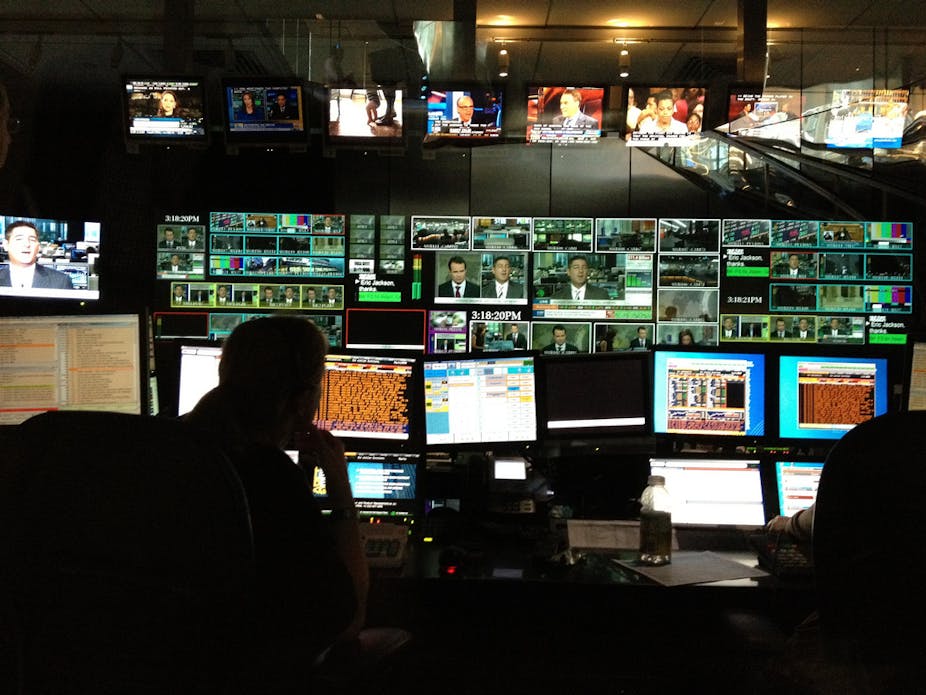Journalists, editors and executives at the highest levels in the Australian news media have known for decades that the industry excludes, marginalises and stereotypes women both as sources of news and as newsmakers.
Its own union, the Media, Entertainment and Arts Alliance, with the International Federation of Journalists produced a report as early as 1996 showing that women were (and continue to be) underrepresented at every level in the newsroom and that the “non and misrepresentation of women” as news sources needed to be addressed. The report also suggested the media “make themselves ethically accountable in a transparent and public manner”.
The report was promptly shelved and little has changed for female journalists.
But one single decision by Bloomberg News this week may change the Australian media’s lethargy on systemic gender inequity.
The fact that Bloomberg News – a financial news agency founded in 1981 by former New York mayor Michael Bloomberg, has now mandated that all its news stories include at least one female voice is a response to a wider industry crisis.
Some of the world’s oldest and most prestigious newspapers have closed in the past few years, journalists have been culled most notably in the UK, US and also Australia and news organisations have been forced to do more with less as digital technology has dramatically changed the way news is produced and consumed.
A rush for answers that may sustain the “fourth estate” as it bleeds readers, staff and money has excluded any real interest in women, particularly in Australia where the union’s most recent support for women includes backing a mentoring group for female journalists, leaving women to deal with what is seen as a “women’s problem”.
There has been an avalanche of reports and talks about the future of journalism since about 2006 and barely any mention women as readers or journalists.
It’s time the Australian news media took its lead from more progressive international media organisations and pulled its head out of the sand on gender issues. It must accept and act on what decades of media research has shown.
Why are women still missing?
Women are grossly underrepresented as news sources in Australia, as they are around the world, which results in news that paints a picture of a world in which women are largely absent.
Angela Romano’s 2010 report found that just 24% of the stories she surveyed across all news platforms in Australia included female sources.
Romano found that when women were sources of news they were commonly defined in familial terms as wife, mother, daughter, sister and were disproportionately portrayed as celebrities and victims. Most expert sources are also male.
No industry can thrive in the 21st century when it fails to recognise that one half of the population and its “consumers” have been largely ignored – the news media is no different.
So, when Bloomberg News’ editor-in-chief Matthew Winkler told staff this week that: “All Bloomberg News enterprise work must include at least one woman’s voice, and preferably a balance of men and women”, he was acknowledging that the media needed to reclaim its female readership which it has largely ignored for too long.
“Women are engaged in every topic we cover. Our journalism should reflect that variety,” he was quoted as saying.
The Bloomberg mandate follows a House of Lords Select Committee on Communications report that found in Britain:
“Despite the fact that women make up just over half the population, they are underrepresented, both as staff and as experts, in news and current affairs broadcasting”.
In Australia you can almost hear the collective groan from media managers, who in this country, like many around the world, are mostly men.
For a relatively prosperous, democratic and ostensibly egalitarian western nation, the statistics for women in decision making positions in the Australian news media are poor and fall well below the statistics for comparable countries like the United States and the United Kingdom, according to the International Women’s Media Foundation.
Men occupy the large majority of senior editorial and management jobs in Australian newsrooms, with women making up only 20% of those in governance (i.e. boards of directors), and 10% in top-level management (i.e. publishers, chief executive officers). The numbers of women in senior management (22%) and middle management (29%) are also low. These two occupational levels include roles like news directors and executive editors who decide on news assignments and take part in other tasks associated with shaping the news.
There’s always a backlash
There will be the usual cries of “political correctness” gone mad. But it may trigger questions of the Australian news media that has often shone a light on industries where gender inequality is rife, yet is notoriously shy at shining a light on its own systemic problems.
If the industry wants to reclaim its lost female readers, and moreover to be fair and inclusive of all citizens, then Australian media outlets need to follow the Bloomberg lead.
As a former journalist I know that it is not difficult to find sources to provide information and quotes for news stories, but it does depend on who you cultivate.
When journalists are under extreme time pressure they tend to go to the same people time after time, and for the most part those voices have been male – even on issues that could be deemed women’s issues.
In these times of great upheaval and industry change, this is the very best moment to challenge and act on established norms that have fostered inequity.

